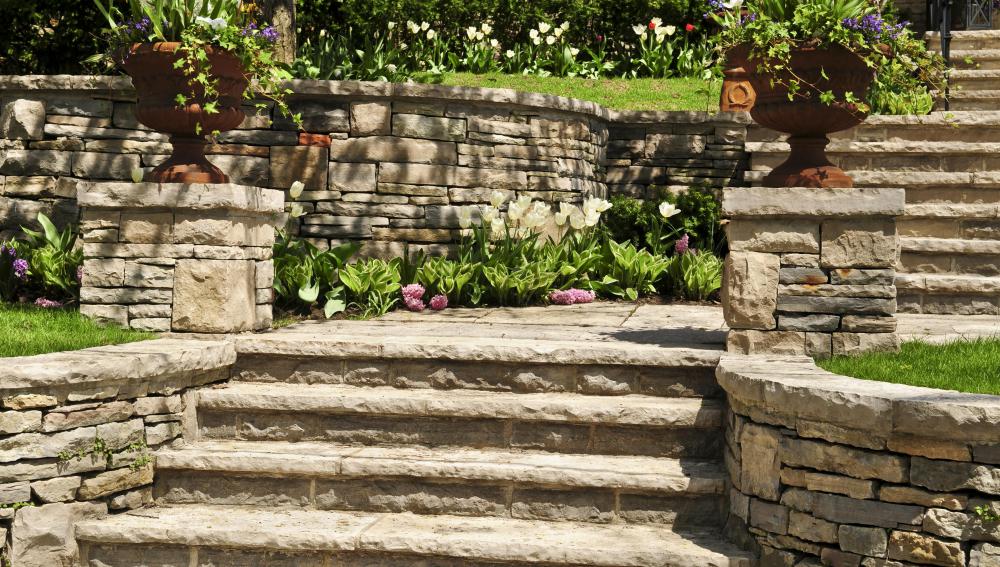At HomeQuestionsAnswered, we're committed to delivering accurate, trustworthy information. Our expert-authored content is rigorously fact-checked and sourced from credible authorities. Discover how we uphold the highest standards in providing you with reliable knowledge.
What is a Retaining Wall?
A retaining wall is a stabilizing structure used to hold sloping ground in place and to prevent the erosion and the movement of soil. It must be substantial and sturdy enough to accommodate and redistribute the lateral pressure caused by sloping ground. It is normally designed with seepage holes, which allow collected ground water to escape. This releases the additional pressure created by accumulated water and helps keep the wall stable.
Several different materials can be used to construct a retaining wall. Stone and concrete are often used, and there are special blocks crafted from aggregate materials and light concrete that are designed specifically for this purpose. Some styles interlock, making assembly simpler, less costly and less time consuming, because each block fits securely with the next. Because the fit of these blocks is secure, they do not require the addition of mortar to hold them together.

A retaining wall can be a series of "steps" or tiers, which allows for a more attractive design as well as more efficient erosion control. The design can include different types of plantings, flowers or materials in each tier to bring more texture, color and interest to the area. Aside from the aesthetic value, a tiered design also provides better erosion control by breaking down the amount of soil, and therefore pressure, held by each division of the wall.

Large stones and railroad ties were often used to build a tiered retaining wall in the past. Today, there are many styles and types of blocks available for this purpose, and most people choose preformed blocks. They are affordable and easy to use, making other methods somewhat obsolete, unless the look of rough stone or wood is preferred.
A homeowner can build the wall himself or have one built by a professional. The key to constructing a stable wall is making sure that it is completely level. Each layer must also be backfilled to give it substance and to help provide good drainage. Generally, sand, stone, pea gravel or leftover soil is used as backfill.
AS FEATURED ON:
AS FEATURED ON:














Discussion Comments
the soil pressure acting on the wall by retaining materials.
what is the factors that effect the strength the retaining wall?
Post your comments